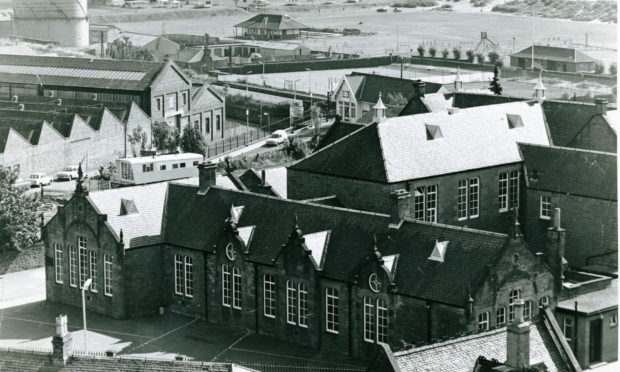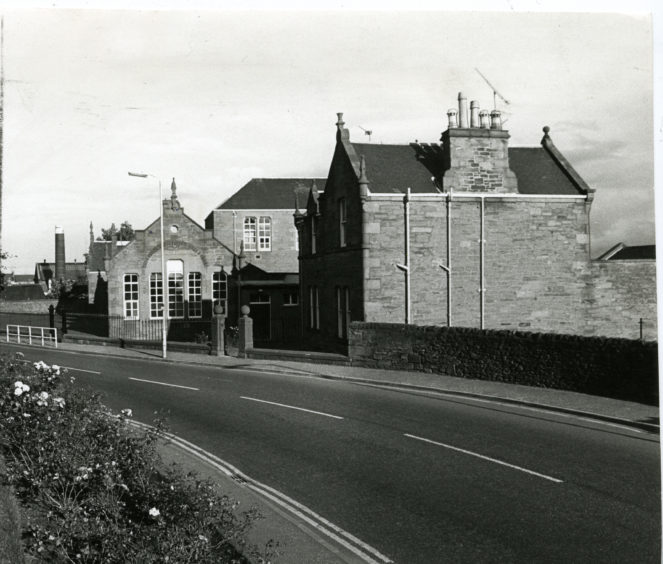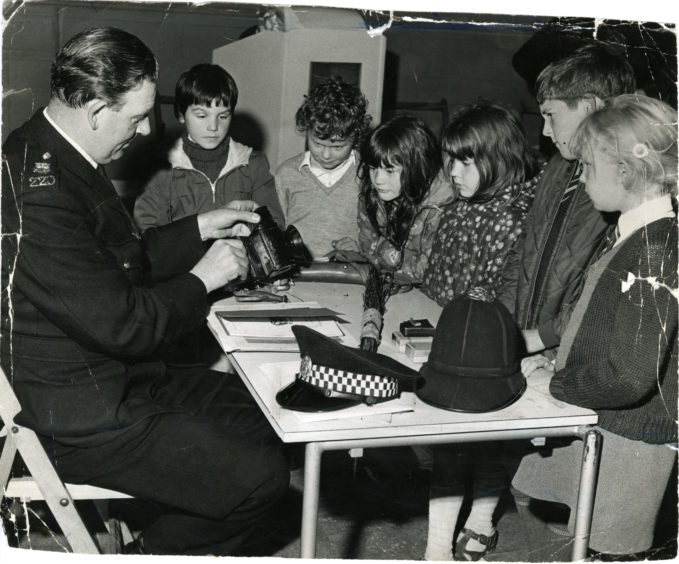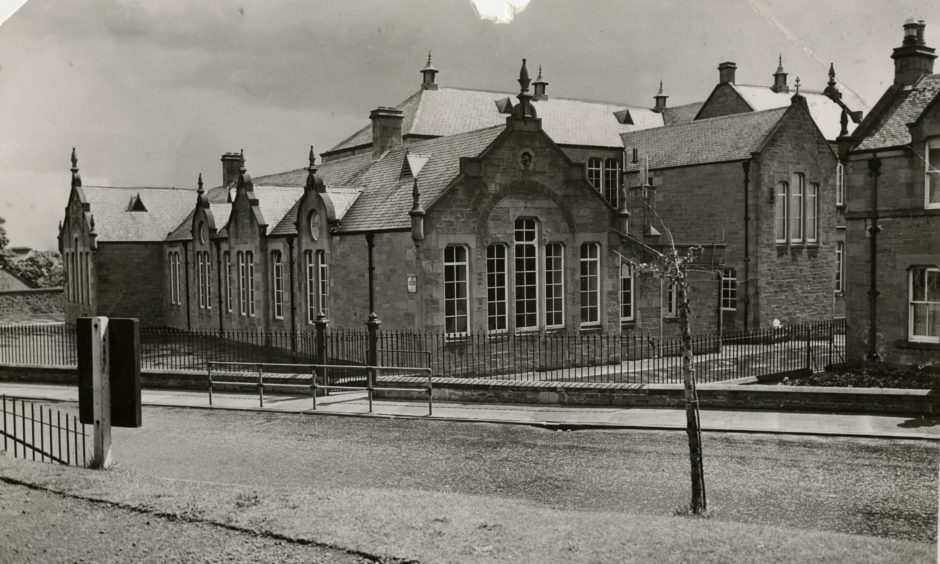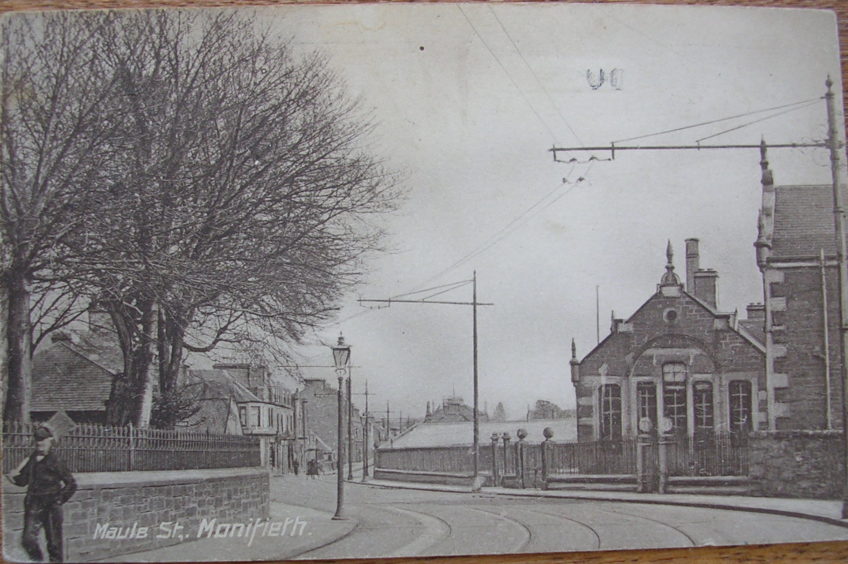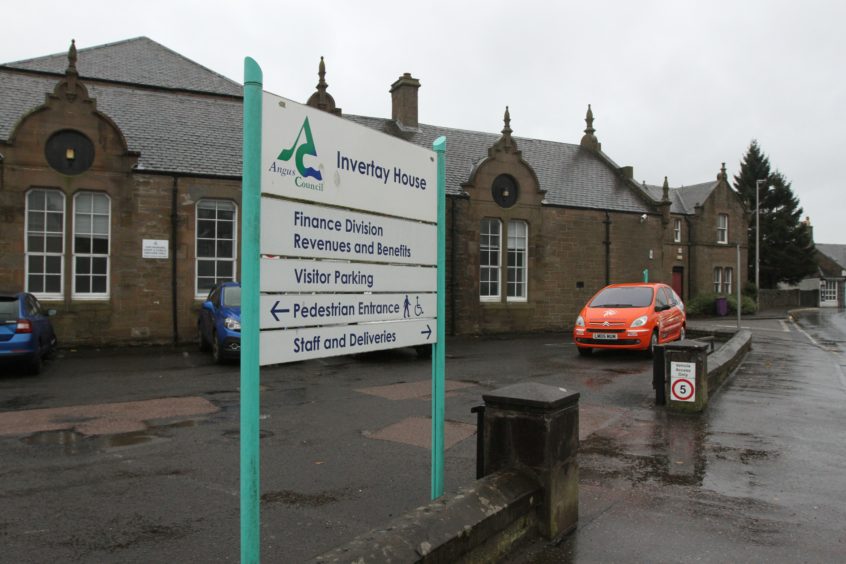It’s 35 years since Invertay Primary School closed its doors to pupils. It was a turbulent time for the Monifieth community, as Gayle Ritchie discovers.
Thirty-five years ago, in the summer of 1985, the school bell rang for the very last time at Invertay Primary.
Cuts in Tayside Regional Council’s education budget meant that the school on Monifieth’s Maule Street came under the axe, closing its doors to pupils on June 26.
Earlier in the week, a dedicated parents’ action group, which had fought hard to retain the school, threw a special party for the children.
The much-loved head teacher, Laura Steven, handed out pen-and-ink drawings of the school to every pupil, while the final assembly and prizegiving was an emotional affair.
Hundreds of parents were outraged by the closure, which meant their children had to be relocated to the neighbouring schools of Grange and Seaview.
They were united in their belief that the educational disadvantage of closing Invertay and uprooting its pupils far outweighed any other considerations, whether they involved school rolls or finance.
An emphatic thumbs down
Parents first received a letter about the proposed closure from Tory-controlled Tayside Regional Council on November 10 1983.
It was claimed this did not give full details of where the closure plans could be obtained or how parents might object.
And it was also criticised for not being a proper “consultation” letter.
The school hall was crammed with more than 200 hostile parents on November 28 1983, all giving an emphatic thumbs down to the closure plan.
A report in The Courier said: “Monifieth parents filled every available seat. They sat crouched on benches at the side; they stood at the back and in the open doorway. They might even have climbed the wallbars but they did not!”
The arrival of the director of education, David Robertson, depute director of education George McCafferty, and committee convener Barbara Vaughan was met with silence – a silence repeated when Mrs Vaughan concluded proceedings two hours later.
“Throughout the meeting, which never once degenerated into a shouting match, the message from parents was loud, clear and consistent: ‘Do not close Invertay Primary School!’” stated the report.
The director of education said with primary school rolls falling for the past ten years, it was possible to accommodate pupils in fewer schools in the interest of revenue saving.
Though well maintained and recently updated – more than £60,000 had just been spent on heating and rewiring – Invertay was said to lack some features of a modern primary school, such as Grange or Seaview.
The meeting was told that just over £60,000 per year would be saved with the school’s closure.
“Monifieth parents filled every available seat. They sat crouched on benches at the side; they stood at the back and in the open doorway. They might even have climbed the wallbars but they did not!”
Some parents wanted reassurance that Seaview would be able to cope with all 237 pupils from Invertay. And many were worried about the safety aspect of having to send their children to Grange, more than two miles away along a busy main road.
Legal action
Parents, stunned when they heard of the rezoning proposals, were more than happy to back the legal action raised by Arthur Kinnear, who had two daughters at Invertay, against the region.
In a petition to the Court of Session, Mr Allan Rodger, counsel for Mr Kinnear, said the decision to close the school would adversely affect the children’s schooling.
The region was not represented in court and the judge gave them just 14 days to lodge answers to the petition.
Despite the legal action, the school closed in June 1985, although the closure was heavily criticised, with fears raised that children would suffer in their education for years, following such a “foolish decision”.
Dr Nigel Lucas, on behalf of the parents’ action committee, said little or no need had been paid to the real needs of parents, children or the community, and described it as a “sordid affair”.
Dr Lucas complained to John Wallace, the council’s chief executive, and to the Ombudsman about the region’s conduct in its “so-called consultation period”.
Wrangle
After the school closed, the B-listed building lay empty for years thanks to decisions on its future being delayed by legal difficulties.
Suggestions were made that it could be used as day centre for the elderly or transformed into a community centre, while a private developer expressed interest in the site for housing.
The future of the school remained in limbo largely because there was a blank zone over who held the title deeds to the land.
In 1988, the disused school was targeted by vandals who went on a rampage smashing around 50 windows, causing damage worth several hundreds of pounds.
Dorothy Pattullo, the Tory regional councillor for the area, continually pressed the region’s education department for action – and to reopen it for community use – but said she was rejected because of high costs.
Like all empty properties, the prominent Victorian building steadily began to deteriorate and was repeatedly broken into.
Later in 1988, Tayside Regional Council temporarily accommodated the local authority’s finance and revenue sections in the school, and it was used as a tax office for years.
In 2016, Monifieth Community Resource Group’s bid to have the old Invertay Primary building – by this time named Invertay House and soon to be surplus to Angus Council – transferred into community ownership was given the first green light by Angus Council.
MCRG’s chair Jean Lee said it would be community-owned and run which would “keep the building for community use instead of being converted into flats or sitting rotting waiting for a buyer as often happens to big old buildings”.
However, the group’s dreams were shattered in 2018 after a £1 million bid for Big Lottery funding was turned down. A community asset transfer from Angus Council had been depending on the funding.
Future use
The community was devastated, including members of Carnoustie and Monifieth men’s shed, who used the former machine room of Invertay House as their base.
Angus Council’s housing service currently has ambitions to develop 35 affordable homes on the site – a move that would require councillors to knock back the community asset transfer (CAT) application and potentially evict the group from the building.
The men’s shed movement began on the opposite side of the world as a means of bringing men out of social isolation and the local group is offering a £1,500 annual rent for the space.
Angus officials suggest the market rent for the area would be around £9,000.
Monifieth and Sidlaw Conservative councillor Craig Fotheringham was a pupil at Invertay from 1972 to 1979.
He said: “The school was used by Angus Council for the revenues and benefits service and also it was where the council tax books were printed a number of years ago.
“It’s been closed for about three or four years now but there are plans to convert the school into social housing.
“It’s a lovely building that should be saved for the people of Monifieth.”
History
Invertay House was built in 1878 and opened as Monifieth Public School.
In 1928 the Seaview School annexe was established to accommodate the increased numbers of pupils within the local area.
Monifieth Public School offered education for primary and secondary pupils until 1966 when government education policy decreed it could only be used for primary education.
It was at that time named Invertay Primary School.
